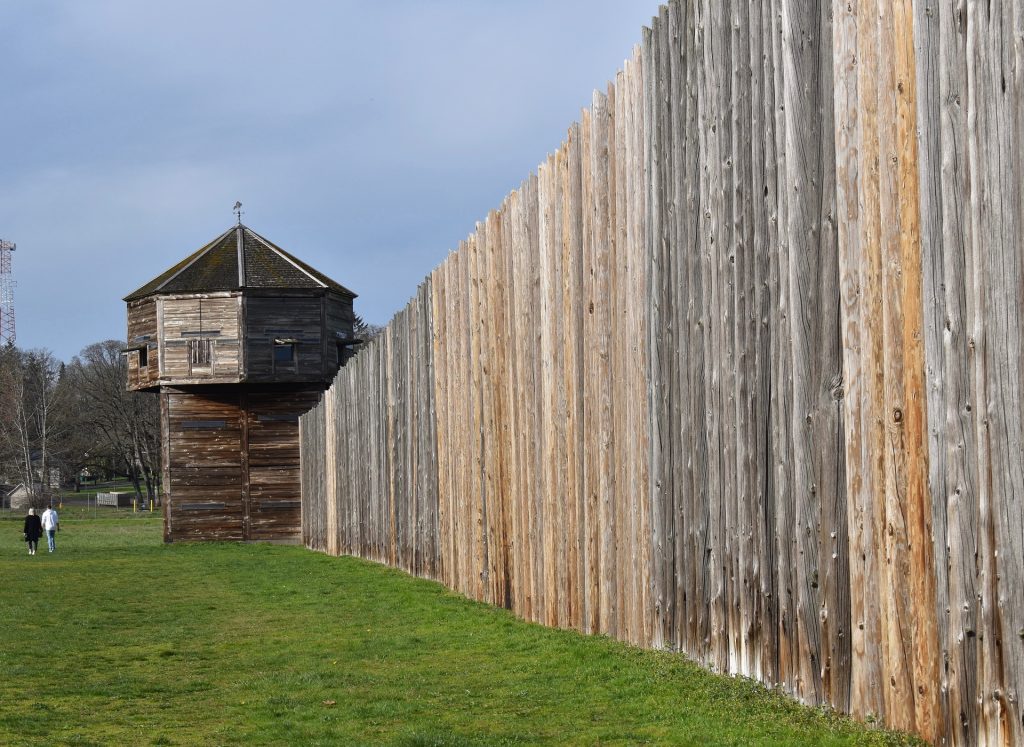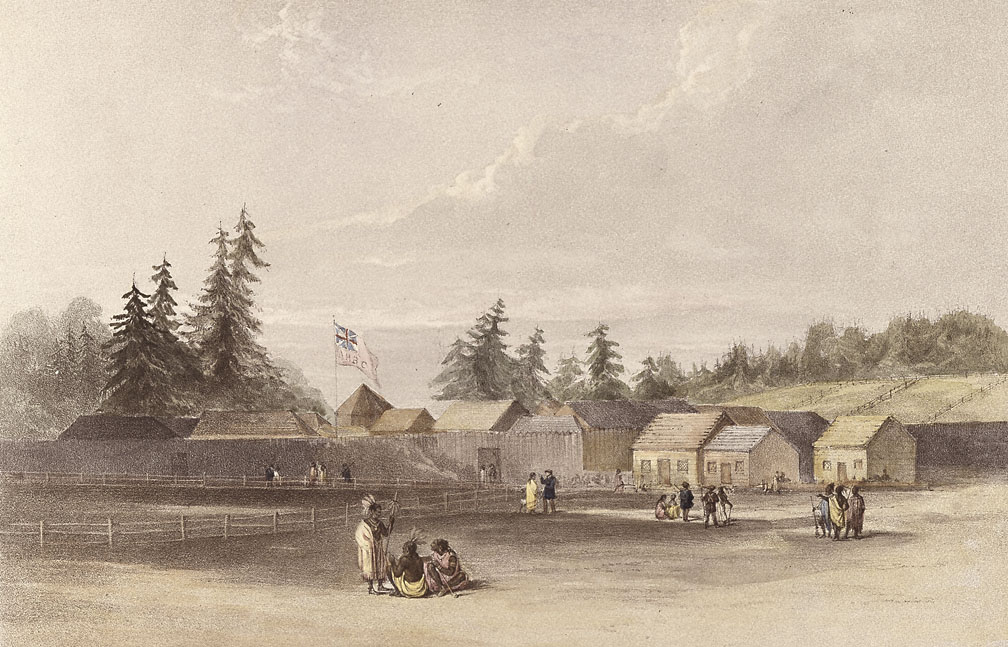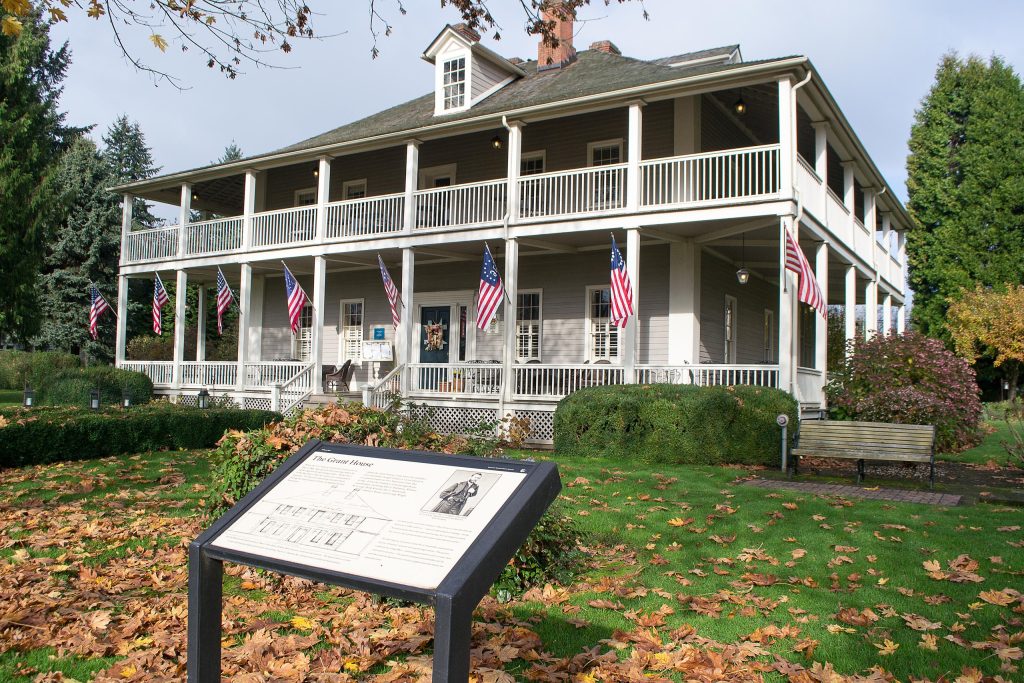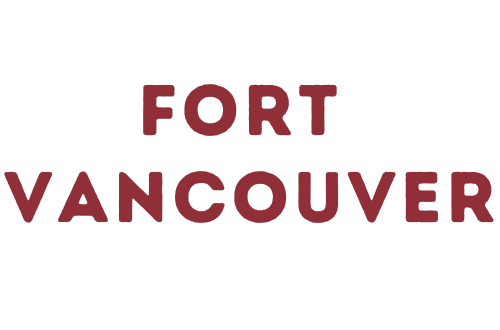explore fort vancouver
Discover the rich past of Fort Vancouver in Vancouver, Washington on the bank of the Columbia River.
Fort Vancouver History
Situated on the northern bank of the Columbia River in Vancouver, Washington, Fort Vancouver holds an evocative echo of a past when the Pacific Northwest was a theatre of commerce and cultural exchange, under both British and American rule. Constructed in 1824, Fort Vancouver was originally a fur trading outpost of the Hudson's Bay Company, the most influential commercial entity of its day. This pivotal trading hub shaped the development of the Pacific Northwest, reflecting the economic and social dynamics of the 19th-century frontier.
The imposing palisade and the numerous wooden structures within were collectively called Fort Vancouver. Each building had a dedicated purpose: the Chief Factor's residence for senior officers, the Counting House for administrative duties, and a host of workshops, stores, and housing for workers. The fort was strategically located, exploiting the Columbia River's resources and providing a crucial link to the fur-rich territories further inland.

The Hudsons's Bay Company
Founded in 1670, the Hudson's Bay Company (HBC) is one of the oldest existing corporations in the world. Originally established by English merchants under a royal charter from King Charles II, HBC initially focused on the fur trade, operating an extensive network of trading posts across North America. The vast area over which they traded and conducted operations, known as Rupert's Land, comprised much of what is now Canada.

Key Events At The Fort
Establishment by the Hudson's Bay Company (1824): Fort Vancouver was established by the British Hudson's Bay Company as a fur trading post and the administrative center of the company's Columbia Department. Its location along the Columbia River made it a strategic hub for the lucrative fur trade and a center for agricultural production.

People At The Fort
Fort Vancouver in Vancouver, Washington, has a rich history and served as a key location for many influential individuals throughout its existence. Including dr. John McLaughlin, James Douglas, George Simpson, Peter Skene Ogden, Major John S. Hatheway, Ulysses S. Grant, General O. O. Howard, and Geroge C. Marshall.
Diversity At The Fort
The diversity within Fort Vancouver was astounding, with employees and their families hailing from across the world. Among them were Scottish traders, French-Canadian voyageurs, English sailors, Hawaiian laborers, and indigenous peoples from diverse North American tribes. This cosmopolitan mix turned Fort Vancouver into a cauldron of languages, traditions, and ideas, providing a fascinating snapshot of colonial frontier life.
The Fort's Influence
The fort's role and influence started to wane when the fur trade declined. The Hudson's Bay Company abandoned it in 1846 following the resolution of the Oregon Boundary Dispute, which ceded the area to American control. Subsequently, the U.S. Army took over the site, converting it into a military post. It served as the administrative center for military operations in the Pacific Northwest. The fort continued to be a site of significance throughout several military conflicts, including the Civil War, Spanish-American War, and both World Wars.
Modern Revival
However, the original structures of the fort gradually fell into disrepair. An 1849 fire devastated many of the buildings, and by the late 19th century, the fort was practically in ruins. It wasn't until the 20th century that the importance of Fort Vancouver was recognized, and efforts were made to protect and restore this historic site.
National Historic Site
Fort Vancouver was declared a National Historic Site in 1948, marking a shift towards preservation and public engagement. Today, it stands as a testament to the diverse cultural heritage of the Pacific Northwest, a tangible link to an era of exploration, commerce, and cultural interaction that left indelible marks on American history. The restoration efforts have rebuilt several of the original buildings, allowing visitors to walk through the fort as it would have appeared in its heyday, making the past come alive.
In the chronicles of the American frontier, Fort Vancouver occupies a unique place, symbolizing the complex history of European colonization, economic expansion, cultural exchanges, and military engagements. Its wooden structures and stories embedded within its grounds represent the dynamic and diverse influences that shaped the Pacific Northwest. Through its rich tapestry of history, Fort Vancouver allows us to traverse through time, unveiling the past of this crucial region.
